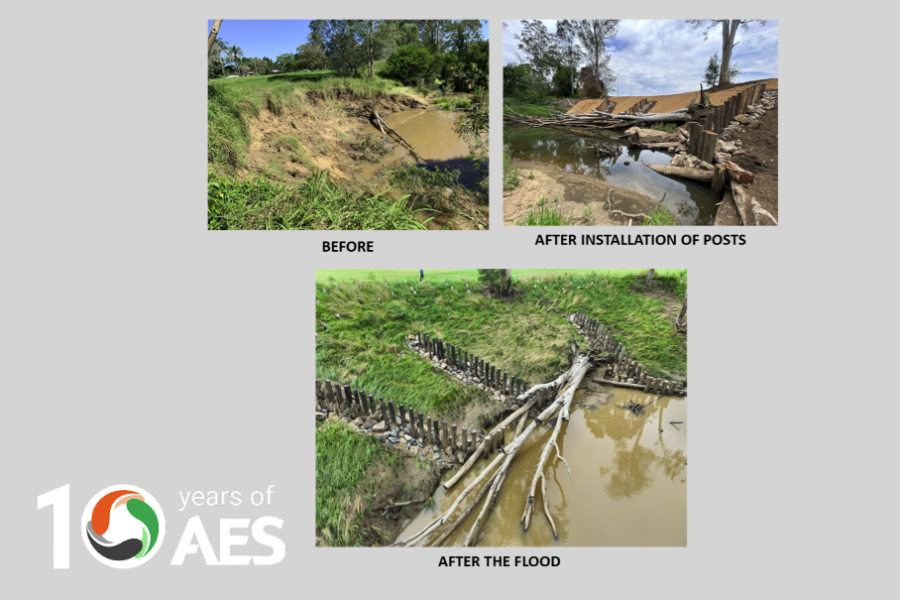
Rethinking Rehabilitation for Waterways
How felled timber is powering streambank rehabilitation in South East Queensland
When you think of streambank rehabilitation, timber waste might not come to mind as a solution; but at a recent International Erosion Control Association Australasia (IECA) Australasia workshop, that thinking was turned on its head.
Hosted by the IECA and Healthy Land and Water, the workshop titled Using Wood in Streambank Recovery and Resilience brought together a passionate community of environmental specialists, consultants, and practitioners. Their mission? To explore how the humble tree, often cleared and discarded during construction, can play a vital role in protecting and rejuvenating our waterways.
From Waste to Wonder
Too often, vegetation felled during construction is mulched or hauled away. But what if, instead of seeing it as waste, we viewed it as a resource?
That’s exactly what the workshop demonstrated. With insightful presentations and real-world case studies, attendees learned how timber, when used strategically, becomes a powerful tool for erosion control and habitat creation. Timber piles, log jams, and woody debris structures not only stabilise banks, they also slow water flow, form pools, and foster biodiversity by reconnecting fragmented ecosystems.
A Blueprint for Smarter Rehabilitation
One of the standout messages from the day was the importance of forward planning. Rehabilitation begins long before boots hit the ground. With the right design approach, felled trees can be repurposed on-site, reducing costs, waste, and environmental impact. It’s a sustainable, circular model that benefits both projects and the planet.
Even better? These natural methods don’t stand alone. Workshop examples showcased blended techniques – combining timber structures with rock armouring and extensive revegetation to deliver stability today and resilience tomorrow.
Real Voices, Real Impact
What made the workshop truly impactful were the stories shared by on-the-ground practitioners. Their candid insights into the challenges and rewards of working with natural materials gave depth to the day’s learning. It’s one thing to talk about theory, it’s another to hear how local teams are putting it into practice and making a tangible difference in South East Queensland.
Key Takeaways
- Natural materials like timber offer both structural integrity and ecological value.
- Smart planning can turn cleared vegetation into a powerful restoration asset.
- A whole-of-ecosystem approach leads to more resilient, long-term outcomes.
- Blending natural and engineered methods results in better, more sustainable solutions.
Rewriting the Rehabilitation Playbook
This workshop was more than an educational event it was a call to action. It reminded us that rehabilitation isn’t just about repairing damage; it’s about shifting our mindset to work with nature, not against it. And it showed that, with the right approach, what we once saw as “waste” could be the key to healthier waterways and stronger communities.

Photo credit: Ipswich City Council / Healthy Land & Water
At Applied Environment & Safety, we are proud to support this type of planning and rehabilitation. Whether you’re planning clearing vegetation or rehabilitation, our team can help identify solutions, such as reusable timber to integrate it into erosion control strategies, and oversee the implementation. Together, we can design solutions that are smart, sustainable, and ecosystem-friendly from day one. For more information on how we can support you, click here.
